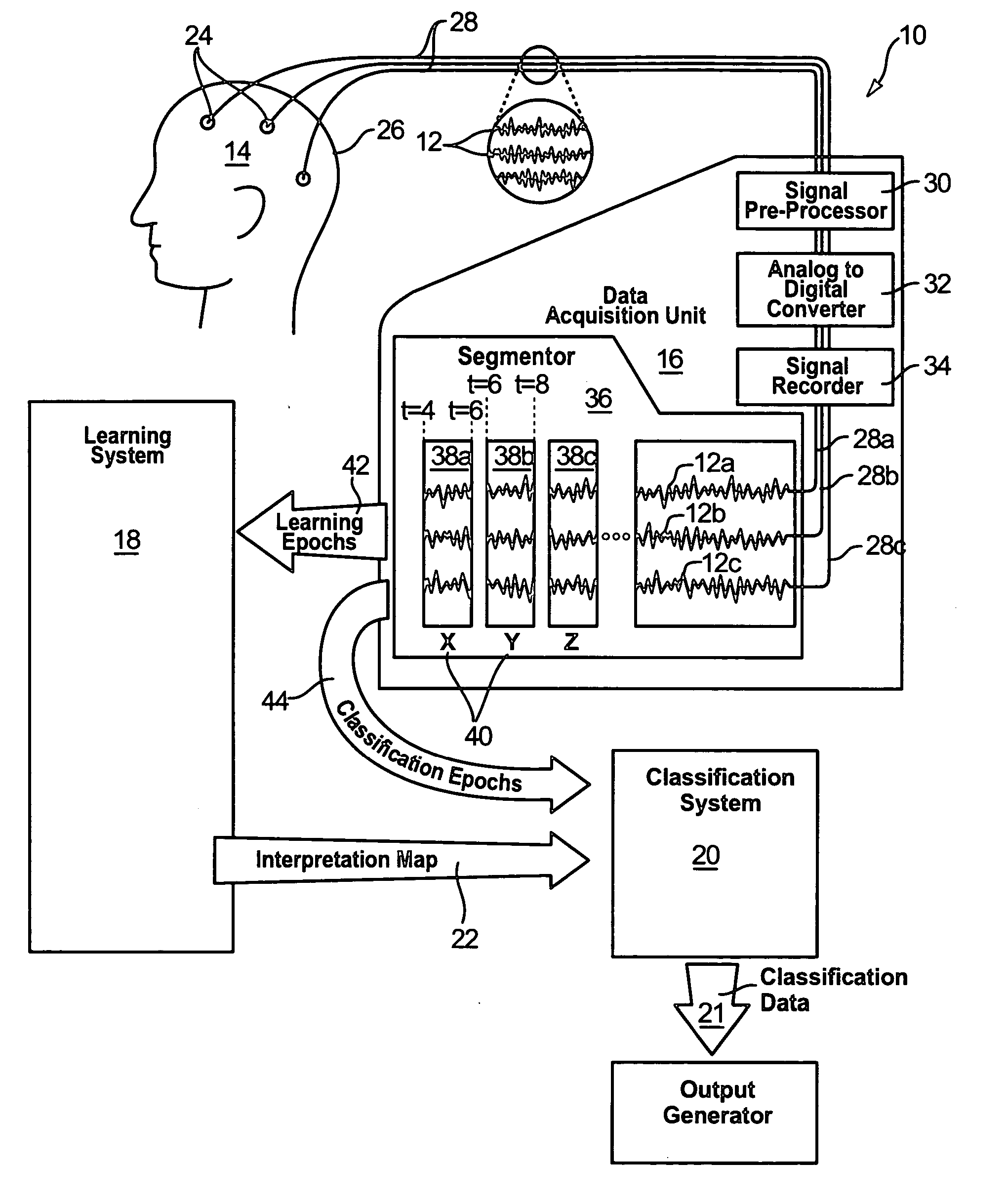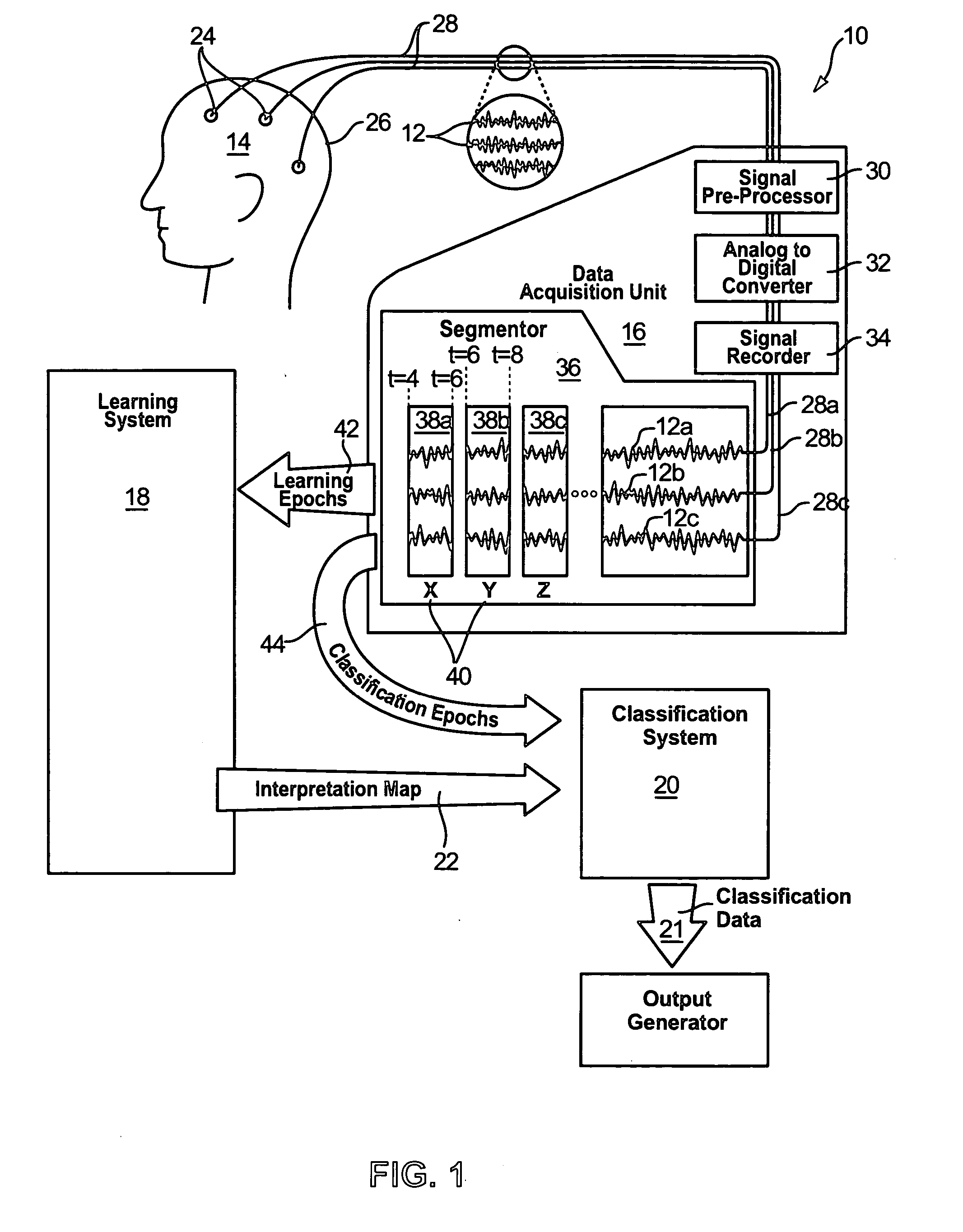Drug profiling apparatus and method
a profiling apparatus and drug technology, applied in the field of signal processing, can solve the problems of large information loss in the averaging process, limited analysis of art spectral analysis techniques, and general limitation of single channel analysis or comparison of two channels, so as to improve the discrimination of physiological similarities, improve the accuracy of drug evaluation, and reduce the cost of toxicology testing.
- Summary
- Abstract
- Description
- Claims
- Application Information
AI Technical Summary
Benefits of technology
Problems solved by technology
Method used
Image
Examples
example i
[0141] The subjects were six male Sprague-Dawley rats with individual masses between 400 and 500 grams. The rats were individually caged in a temperature and humidity controlled environment with a 12 hour light / dark cycle. Food and water were available ad libitum.
[0142] All behavioral testing was done in the dark during the dark cycle. For the chronic implant, rats were anesthetized with a one-time 50 mg / kg intraperitoneal dose of pentobarbital and supplemented with 20-27 mg / kg intramuscular ketamine. A one-time injection of 0.2 mg / kg subcutaneous atropine was administered to mitigate fluid build-up in the airways. Four stainless steel skull screws (size 000) were implanted bilaterally over the parietal and frontal cortices and served as EEG leads (120 μm HML-coated stainless steel wire).
[0143] A bundle of eight teflon-insulated microwires (50 to 62 μm) was also implanted into the VTA (−5.8 mm AP, 0.7 mm ML, and 7.8 mm from the cortical surface) and served as a depth electrode for...
example ii
[0168] Referring now to FIG. 35, the brain activation value plot comes from data collected during a one hour EEG study on a freely behaving rat. Fast acting Brevital (3 mg / kg, 150 uL) was administered intravenously at 10, 15, 20, 25 and 30 minutes. Pentobarbital (10 mg / kg, 0.1 mL) was given intravenously at 35 minutes. A single EEG electrode in the rat brain was sampled at 10 KHz. Each data point in the above brain activation value plot represents one second of highly processed EEG. The method of processing the EEG was derived from a pattern learning algorithm that trained on EEG data taking just before and just after the Brevital injection at 30 minutes. The EEG training data was taken from 100 seconds recorded from 28:10 until 29:50 and 180 seconds recorded from 30:10 until 33:10. Each data point represents the degree of presence of a learned combination of phase-encoded frequencies between 1,000 and 3,000 Hertz.
[0169] As shown in the above brain activation value plot, fast actin...
example iii
[0170] Referring now to FIG. 36, a “cognitive comprehension” study was conducted on a human subject who viewed a computer screen displaying a written sentence describing a situation in a picture scene such as “The horse is kicking the man.” The subject first read the sentence and viewed a correct picture (such as the picture of the horse kicking the man) and also some incorrect pictures (such as the picture of the man sitting on the horse). The pictures were then presented sequentially (one at a time) on the screen while five channels of raw EEG data were recorded from the subject's scalp.
[0171] Nine 1,100 ms epochs (columns) of raw EEG signal data are shown in FIG. 36. Note that it is difficult to visually discern discriminant patterns in the five raw EEG signal channels.
[0172] The cognitive EEG signal channel is a highly processed combination of EEG data from the five raw EEG signal channels and five epochs. A particular weighting pattern has been learned (discovered) and applie...
PUM
 Login to View More
Login to View More Abstract
Description
Claims
Application Information
 Login to View More
Login to View More - R&D
- Intellectual Property
- Life Sciences
- Materials
- Tech Scout
- Unparalleled Data Quality
- Higher Quality Content
- 60% Fewer Hallucinations
Browse by: Latest US Patents, China's latest patents, Technical Efficacy Thesaurus, Application Domain, Technology Topic, Popular Technical Reports.
© 2025 PatSnap. All rights reserved.Legal|Privacy policy|Modern Slavery Act Transparency Statement|Sitemap|About US| Contact US: help@patsnap.com



